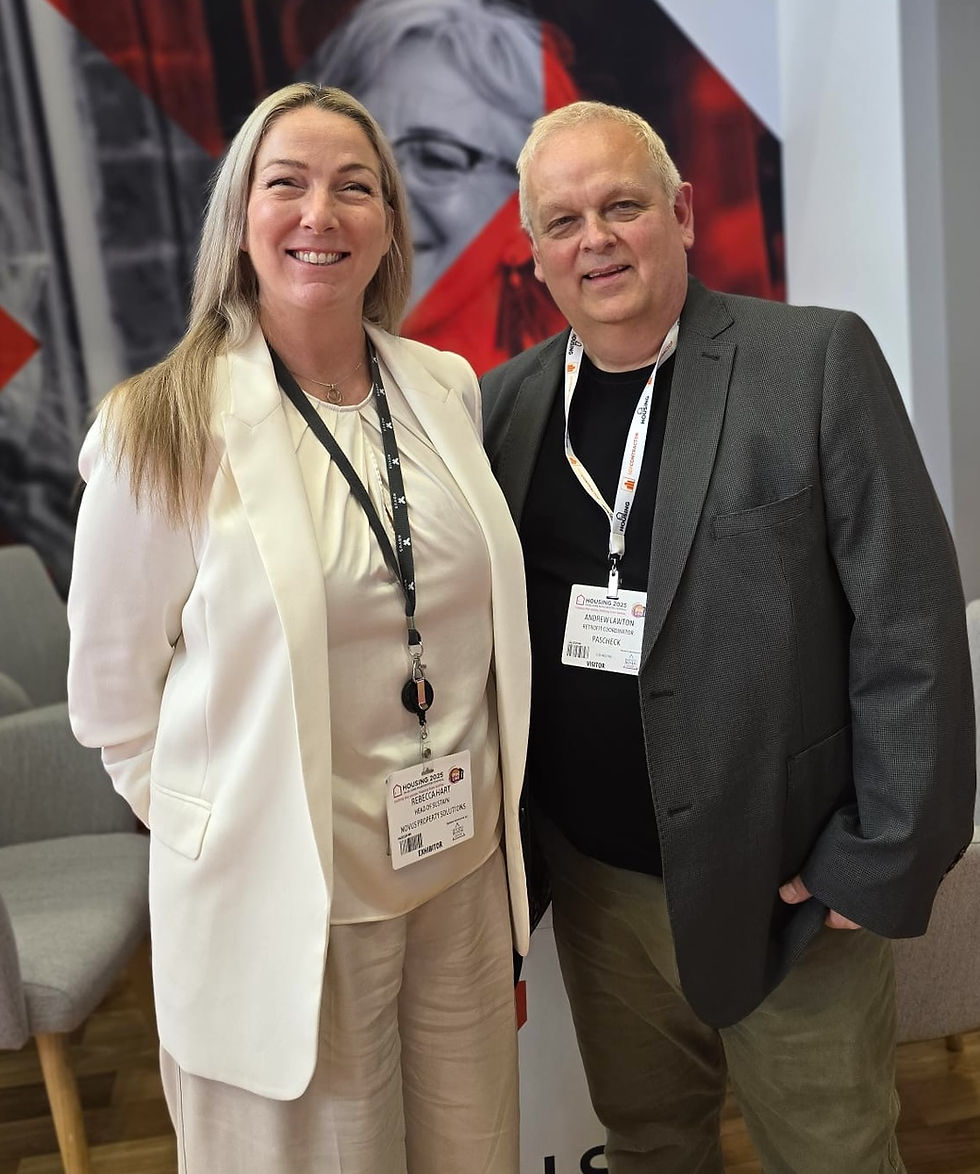Achieving Retrofit Success: A Practical Guide to Navigating PAS 2035
- Andrea Stephenson-Hemmings
- Dec 20, 2024
- 3 min read

The road to successful retrofitting under PAS 2035 can be complex but immensely rewarding. With the right approach, you can enhance the energy efficiency of your properties while improving the comfort and well-being of occupants. Here’s a comprehensive guide to help you navigate the process effectively and achieve your goals.
1. Make a Plan
The foundation of any successful retrofit project is meticulous planning. Begin by assessing and organising your property portfolio. Categorise your properties into three key groups:
Retrofit-ready properties: These are homes that meet the essential criteria for energy efficiency measures.
Priority properties: Focus on properties that urgently need upgrades, either due to poor energy performance or to meet funding deadlines.
Already improved properties: Take stock of homes that have previously undergone energy efficiency improvements to avoid duplicating efforts.
By having a clear understanding of your portfolio, you can streamline your retrofit efforts, allocate resources efficiently, and ensure maximum impact.
2. Ensure Properties Are Retrofit Ready
Before diving into retrofitting, it’s essential to address any underlying defects. Properties must be structurally sound, watertight, dry, and safe. Key areas to assess include:
Structural integrity: Ensure the property can support retrofitting measures such as external insulation.
Waterproofing: Check for leaks or damp issues that could compromise energy efficiency improvements.
Drainage and services: Adequate drainage and functional utilities are crucial for a sustainable retrofit.
Neglecting these fundamentals can lead to complications down the line and may even jeopardise the success of your project.
3. Start Small
For organisations new to PAS 2035 or retrofitting, it’s wise to begin with a pilot project. By starting small, you can:
Gain a deeper understanding of the process and requirements.
Identify potential challenges and refine your approach.
Build confidence before scaling up your efforts.
A pilot project serves as a valuable learning experience, enabling you to establish best practices for larger-scale initiatives.
4. Embrace the “Fabric First” Principle
PAS 2035 prioritises a “fabric first” approach. This means focusing on energy efficiency measures that reduce heating demand before introducing low-carbon heating systems or renewable technologies. Key actions include:
Adding high-quality insulation to walls, roofs, and floors.
Upgrading windows and doors to minimise heat loss.
By addressing the building’s fabric first, you ensure that any subsequent low-carbon heating systems are appropriately sized and operate at peak efficiency.
5. Build Tight, Ventilate Right
Enhancing airtightness is a cornerstone of energy-efficient retrofitting. However, airtight homes must also have adequate ventilation to maintain a healthy indoor environment. Striking the right balance will:
Reduce heating demand.
Improve thermal comfort for occupants.
Mitigate health risks associated with poor air quality.
Effective ventilation systems, such as mechanical ventilation with heat recovery (MVHR), can help achieve these goals while preserving energy efficiency.
6. Consider the Whole House
Retrofitting should never be approached as a series of isolated measures. Instead, treat the property as a cohesive system. For example:
Insulation without adequate ventilation can lead to moisture build-up and damp issues.
New windows may affect air circulation, necessitating adjustments to ventilation strategies.
Adopting a holistic view ensures that all measures work harmoniously, avoiding unintended consequences and maximising the benefits of retrofitting.
7. Follow the Plan, but Stay Flexible
A key feature of PAS 2035 is the creation of a medium-term plan for each property, typically spanning around 30 years. This plan outlines the sequencing of retrofit measures to achieve long-term energy efficiency goals. However, flexibility is vital:
Collaborate with your retrofit coordinator to adapt the plan when new funding opportunities arise.
Align retrofit measures with your organisation’s asset management objectives.
This adaptable approach ensures that you can make the most of available resources while staying true to your strategic goals.
8. Learn from Feedback
Every retrofit project is an opportunity to learn and improve. Collect and analyse feedback from each project to:
Identify what worked well and what could be improved.
Inform future projects with practical insights.
Build a repository of best practices for your team.
Encourage open communication among all stakeholders, including contractors, coordinators, and occupants, to foster continuous improvement.
Conclusion
Success with PAS 2035 lies in careful planning, a commitment to quality, and a willingness to learn and adapt. By making your properties retrofit ready, embracing the “fabric first” principle, and taking a whole-house approach, you can achieve lasting energy efficiency improvements. Start small, stay flexible, and treat each project as a stepping stone towards greater expertise and impact in retrofitting.
With the right strategies and mindset, navigating PAS 2035 can be a transformative journey for your property portfolio and the communities you serve.
Contact PasCheck today to discuss your PAS 2035 retrofit needs and let us help you create a roadmap to energy efficiency success.




